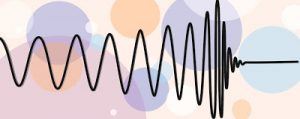Sabine Hossenfelder in Back Reaction:
 The executive summary of the paper is this. They claim that the optical signal does not fit with the hypothesis that the event is a neutron-star merger. Instead, they argue, it looks like a specific type of white-dwarf merger. A white-dwarf merger, however, would not result in a gravitational wave signal strong enough to be measurable by LIGO. So, they conclude, there must be something wrong with the LIGO event. (The VIRGO measurement of that event has a signal-to-noise ratio of merely two, so it doesn’t increase the significance all that much.)
The executive summary of the paper is this. They claim that the optical signal does not fit with the hypothesis that the event is a neutron-star merger. Instead, they argue, it looks like a specific type of white-dwarf merger. A white-dwarf merger, however, would not result in a gravitational wave signal strong enough to be measurable by LIGO. So, they conclude, there must be something wrong with the LIGO event. (The VIRGO measurement of that event has a signal-to-noise ratio of merely two, so it doesn’t increase the significance all that much.)
I am not much of an astrophysicist, but I know a few things about neutron stars, most notably that it’s more difficult to theoretically model them than you may think. Neutron stars are not just massive balls that sit in space. They are rotating hot balls of plasma with pressure gradients that induce various phases of matter. And the equation of state of nuclear matter in the relevant ranges is not well-understood. There’s tons of complex and even chaotic dynamics going on. In short, it’s a mess.
In contrast to this, the production of gravitational waves is a fairly well-understood process that does not depend much on exactly what the matter does. Therefore, the conclusion that I would draw from the Italian paper is that we are misunderstanding something about neutron stars. (Or at least they are.)
But, well, as I said, it’s not my research area. JCAP is a serious journal, and the people who wrote the paper are respected astrophysicists. It’s not folks you can easily dismiss. So I decided to look into this a bit.
More here.
